The Neapolitan Mastiff or the Mastino Napolitano is a greatly revered and feared Italian breed of large dogs. They are hardy dogs and have folds and folds of hanging skin. These immense breeds are effective guard dogs with a look of caution.
The Neapolitan Mastiff can easily startle an onlooker with its imperious glance. But do not worry; this gentle giant is an excellent choice as a family dog. They can be your cuddle buddies and keep you safe at the same time.
These dogs get attached to their family members once they become part of the pack. They can be very calm if not threatened and even shy for being so big.
If you are a Harry Potter fan like us-who isn’t?- you may recall him as ‘fang’ featured as Hagrid’s giant pet dog. Owning it might make you famous among young fellows. And given its daunting appearance, you will surely turn some heads.
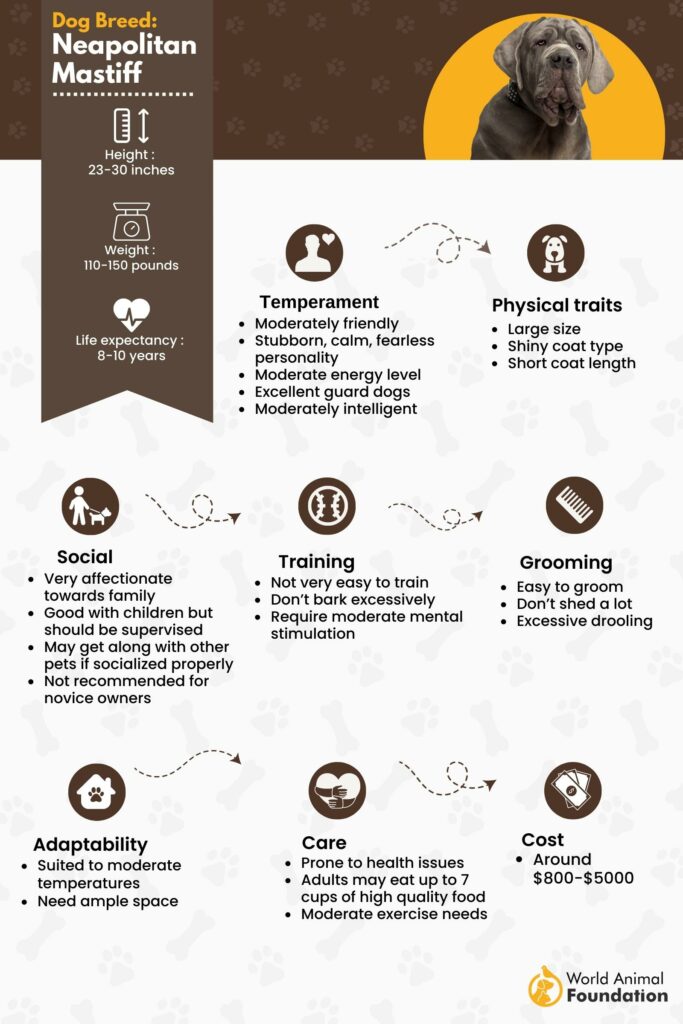
About the Breed
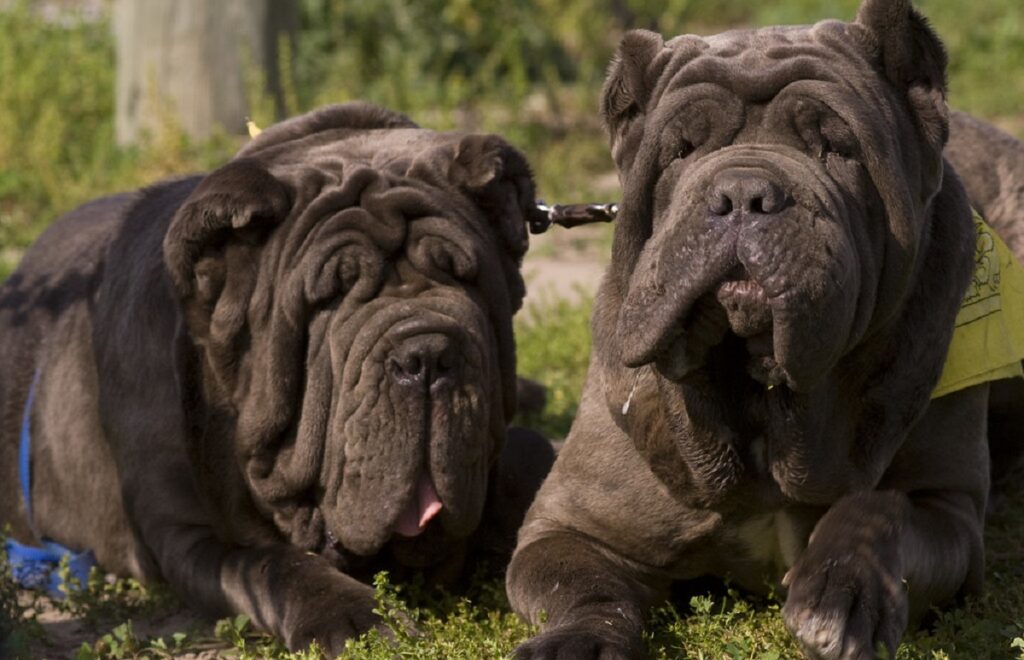
Neapolitan mastiffs are statuesque with large heads, big ears, and big mouths. They are oversized giant breeds with muscular bodies and loose skin. They may look humongous and scary, but they are calm when not threatened.
Admirers refer to the dog as ‘Neo’ or ‘Mastiff’. Young Neapolitan mastiff puppies are small and look like a bag of bones. You can carry them around until they are six months old. They get too heavy to hold after that.
Although Neapolitan mastiff puppies are extremely playful, it is important to control their activities from a young age. They should avoid stairs, uneven floors, and strenuous activities as their heavy frame is prone to injuries and diseases like shoulder dysplasia.
If you are a neat freak you may want to keep away from this breed. Neapolitan mastiffs are very slobbery and they drool a lot. And when we say a lot, we mean loads and loads of saliva. These guys have bags of it. So, it is wise to have towels and cleaning clothes lying around in areas where you expect your dog to be.
Moreover, you need to provide them with plenty of space to move around. Apartments and closed spaces are not ideal for their massive size. The open space of a yard is better for them to lie around than your compact sofa, even though they prefer being in their owner’s company at all times.
Owners are suggested to have fences or boundaries around their property. As a guard dog, a mastiff is protective of the land. They are watchful and won’t let strangers put a foot inside. And who would dare to? A stare is enough to intimidate anyone with false intentions.
History of the Neapolitan Mastiff
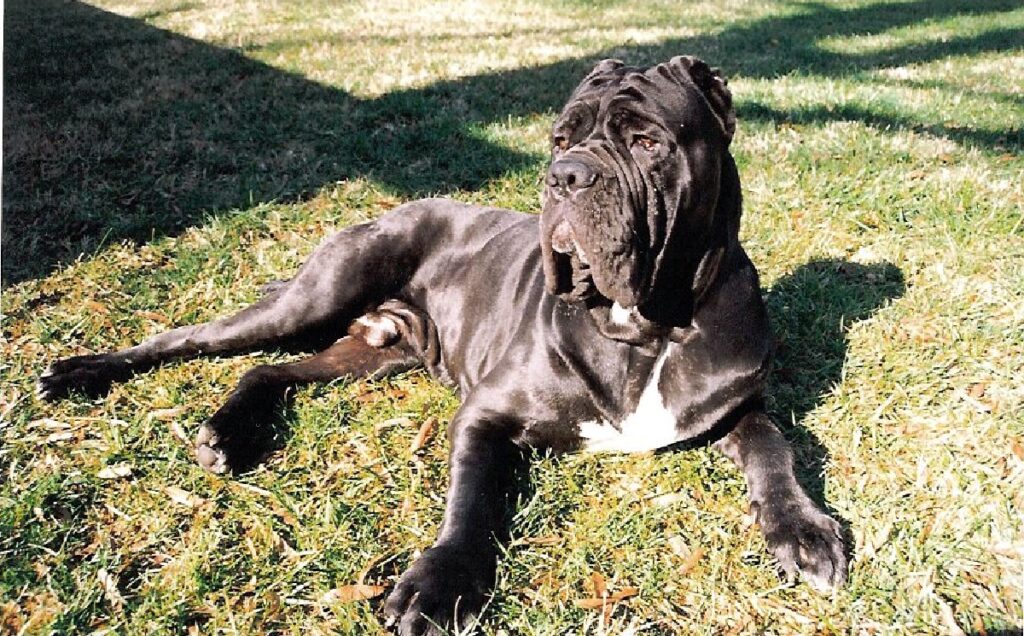
Mastiff and molossus dogs originated in ancient Greece about 3000-5000 years ago. They can be seen in the museum artifacts and history pieces. The dogs have a bloodthirsty past. The Roman empire used them as war dogs and guards.
The Romans further crossed the molossus with large breeds to enhance the giant appearance, eventually creating the mastiff. They were taken to gladiator arenas to fight lions and humans. Their loose folds saved them from attacks and their appearance brought fear to the audience.
The breed started to die out because of the war. It was mostly confined to southern Italy where people used these dogs to guard homes and properties. In 1946, in the city of Naples, a few Italian breeding enthusiasts selectively bred dogs with desirable traits. Hence, the dog earned its name Mastino Napolitano.
The same year, a few Neapolitan Mastiff dogs appeared in the Naples dog show. They caught the attention of a famous journalist Piero Scanziani, who drafted the breed standard in 1948. It was accepted by the Italian kennel club in 1949.
The breeders carefully bred the dogs to make them more family-friendly while retaining their guard dog character.
The Neapolitan Mastiff came to Europe and the United States in the 1970s through Italian immigrants. It gained immediate response and a breed club known as the Neapolitan Mastiff club was formed. It served as an initial registry for the breed. The AKC took notice in 1996 and approved a standard. The Neapolitan mastiff finally became a member of the AKC in 2004.
Neapolitan Mastiff Facts
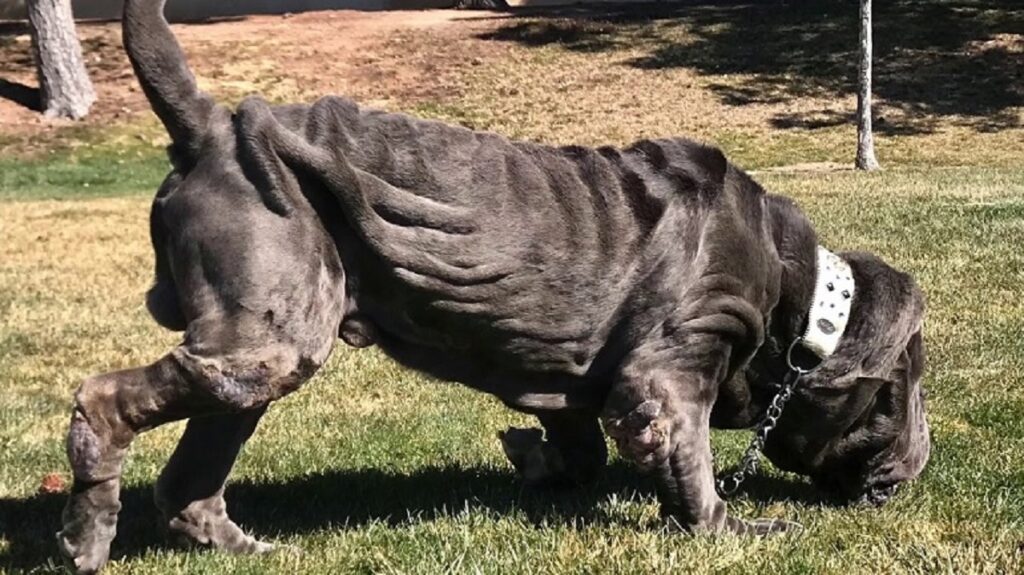
- The Neapolitan mastiff dogs are ancient purebred dogs that reemerged in Italy in the 1940s. They were originally bred as guards and defenders of properties.
- As a giant breed, they have an unusually large appearance. They are massive with large bone structures and muscular bodies. The whole body is covered in loose, saggy skin with a lot of folds.
- Their head is astounding and larger than their body. Their faces are so wrinkled that even their eyes seem hidden behind folds.
- They have a slow long gait that is powerful. According to the American Kennel Club, due to their massive build, their movement can be described as rolling and lumbering, not elegant or showy.
- The Neos are not unnecessarily aggressive. They are loving family pets and extremely protective of their owners and property. They are great around children but tend to be clumsy.
- Early training is needed to keep them social with other dogs. They have a power struggle with large dogs and might be too heavy to play with small dogs.
- They have short hair with minimal shedding. They are easy to groom and regular baths are enough to keep their coats clean.
- Neapolitan mastiffs love being couch potatoes and won’t do anything that they don’t want to do. They do need some space to walk around so apartments are not ideal for them. Or else, your furniture might get knocked around.
- Neapolitan mastiffs need regular walks. They do not like long walks, so you must keep them short but frequent. They can get overweight easily if their exercise needs are not met.
Facts at a Glance
- Weight: 110-150lbs
- Originally bred: inItaly
- Height: 24-31 inches
- Life Span: 8-10 years
- Temperament: protective, stubborn, calm, passive
- Coat: short hair, shiny
- Coat color: gray, black, mahogany, and tawny
- Tendency to bark: low
- Trainability: medium
- Intelligence: medium
- Group: working dog
Neapolitan Mastiff Appearance
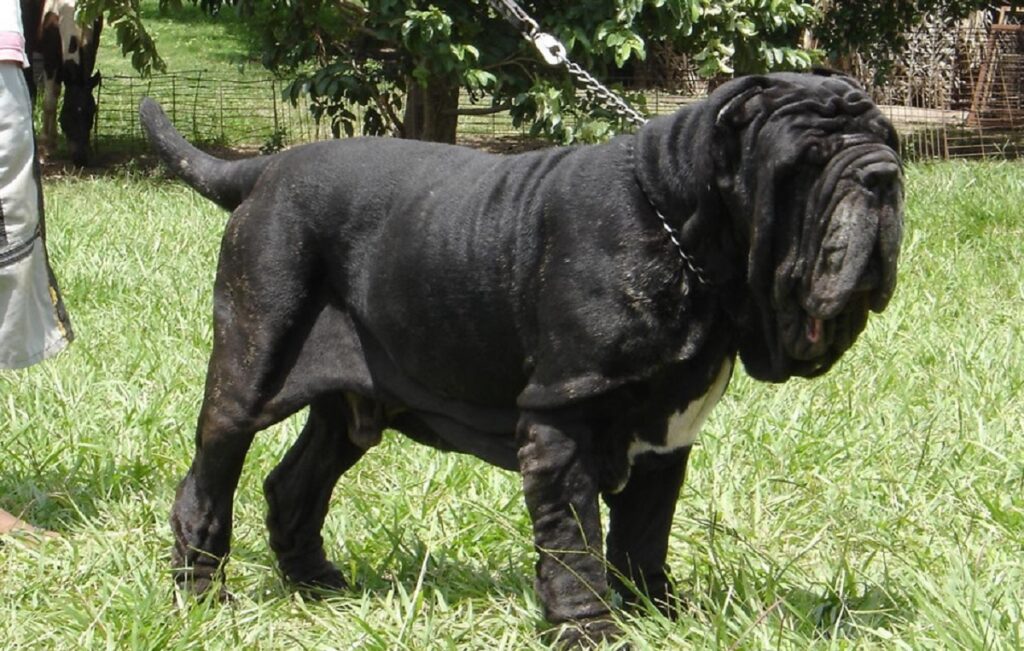
The Neapolitan mastiffs are a massive, giant breed of dogs. Because of their huge size, they have an unusual appearance. Their bodies are longer than they are tall. This gives them more of a feline appearance, like a lion.
Due to this fact, there were rumors that the Romans bred molossus with lions to make Mastiffs. But of course, we know that can’t be true.
Neapolitan mastiffs have a muscular build with large bodies and a powerful presence. They look tough on the outside but are mellow on the inside.
Size
A female Neapolitan mastiff is a different size than a male Neo. Females are generally shorter and smaller, while males are big and giant in appearance. They look so different that sometimes people confuse them as different breeds.
Females are 24-27inches tall at the shoulder, whereas males are 26-30inches tall.
Weight
Just as their height, the Neapolitan mastiff male and female dogs are different in mass. Males are heavier at 130-150lbs while females are typically between 110-130lbs.
Coat Color
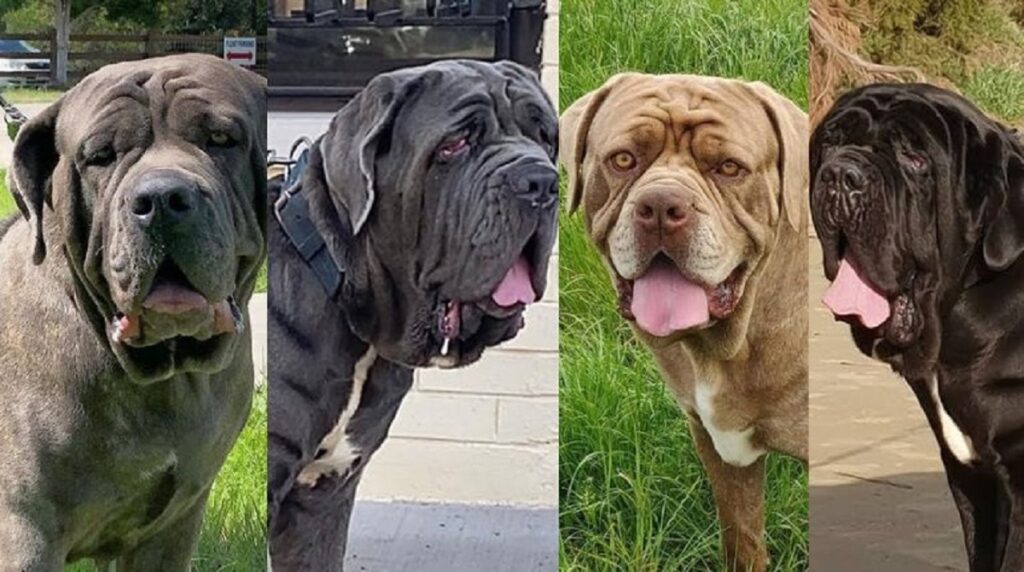
Neapolitan mastiff puppies come in four colors. They can be gray-often confused as blue-, black, mahogany, or tawny. The American kennel club accepts brindles and a white patch on the chest. A white marking on the toes is also considered an acceptable breed standard.
Neapolitan Mastiff Temperament and Personality
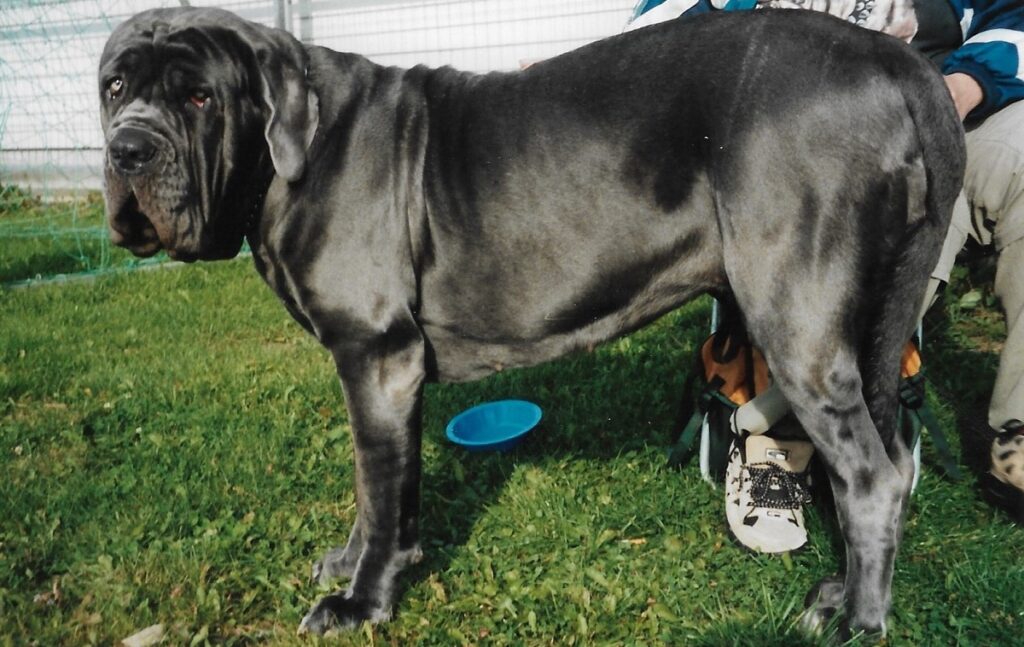
A Neo Mastiff is a family-friendly gentle giant dog. Experienced Neapolitan mastiff breeders have managed to create a friendly dog that no longer has the tendencies of the past.
A Neapolitan mastiff is not required to go to the arena anymore, but it is a guard dog that can do the job very well when needed. This loyal companion is highly protective of its property and will let the invaders know of its presence. Even though it is unlikely to bite, just looking at it is enough to make someone walk away.
Owning a Mastiff dog requires a lot of warming up. The dog is large and slobbers a lot. It also takes up a lot of space in the house. The dog is unaware of its size and loves cuddling with loved ones, resulting in knocked-over furniture and items.
They like being couch potatoes, quietly lying around the house or in the backyard. They don’t unnecessarily jump or run or do anything that they don’t want to do. They are stubborn and ignore commands when not in a mood.
Neo puppy loves its owner and can get fairly attached. It does not like being alone. Ignoring its need for affection can make it withdraw and act aloof. Destructive habits such as chewing can develop.
Neapolitan mastiffs love being around children, but they are clumsy. It is not safe for small children and pets to be around them as their huge size and tendency to fall over can cause more harm than good.
Although the Neapolitan mastiffs are gentle and beautiful, you can expect a mixed reaction from people when you take your dog out for a walk. They draw a crowd immediately giving the owner a celebrity-like status. Get ready to answer a lot of questions!
Neapolitan Mastiff Health

Just like other large dog breeds, Neapolitan mastiffs are also prone to some health problems. Their heavy frame puts a lot of pressure on their bones. If owners are not careful in controlling their activity levels, their joint health can get compromised. This can result in joint disorders like hip dysplasia and elbow dysplasia.
Although uncommon, dogs with deep chests and longer bodies can develop a fatal condition called bloat. Gastric torsion or bloat is a condition where the stomach can develop a build-up of gas. It twists and causes a lot of pain.
If this happens to your dog, immediately rush to the hospital. Delay in action will kill the dog quickly.
With breeds this huge, there is also a fair possibility of heart conditions developing. Cardiomyopathy is a heart condition in which the heart becomes enlarged. It works harder than usual to pump blood, and the dog shows symptoms of heart failure. There is no cure for this, but you can control it with precautions, diet, and medications.
Other health issues include cherry eye. The gland in the eyelid becomes irritated and appears bloodshot red, hence the name. The eyelid can be fixed with surgery if necessary.
Neapolitan Mastiff Grooming
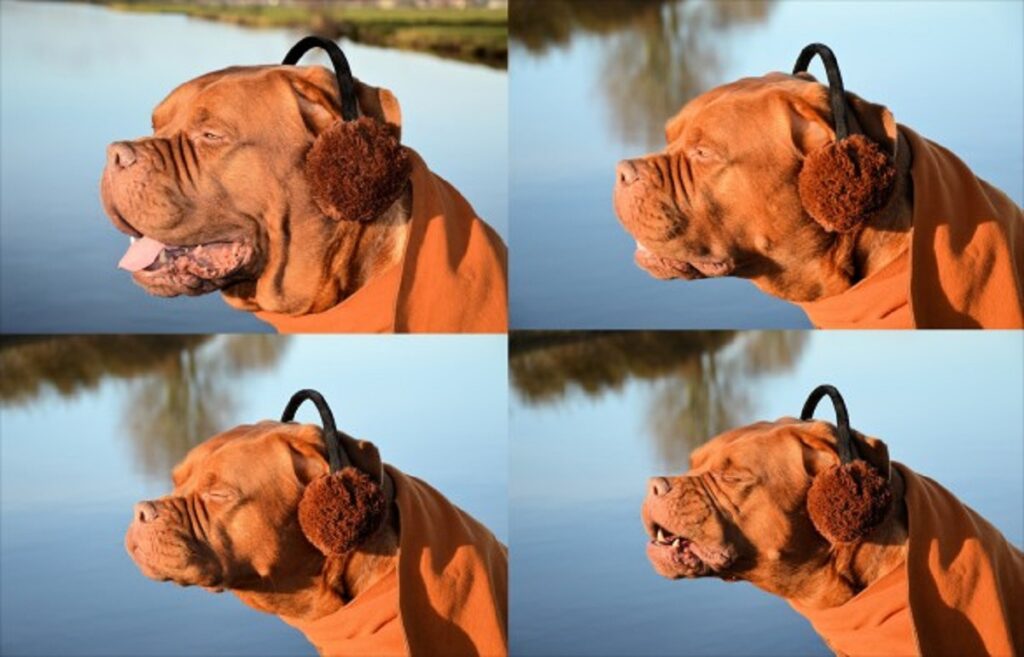
Neapolitan mastiffs have shiny coats with short hair. Even though they do not shed much, it is important to comb them regularly. They shed their coat twice a year, so if you comb the hair yourself you’ll be readily getting rid of all the hair that can fall.
The folds of their skin need to be washed and dried properly. If ignored, they can develop a condition called fold dermatitis that can be very painful for the dog. The folds of the mouth need special care as the dogs drool a lot and need to be cleaned regularly.
Although Neapolitan mastiff loves a bath, you can also keep the coat clean by using a damp cloth and wiping between folds to avoid skin infections. They also require regular nail trimming, ear cleaning, and teeth brushing to maintain their physical health.
This dog breed does not respond well to warm weather or very cold weather. They are best suited for normal temperatures as the skin folds can heat their body temperature quickly and a short coat is not suitable for very cold conditions.
Neapolitan Mastiff Training
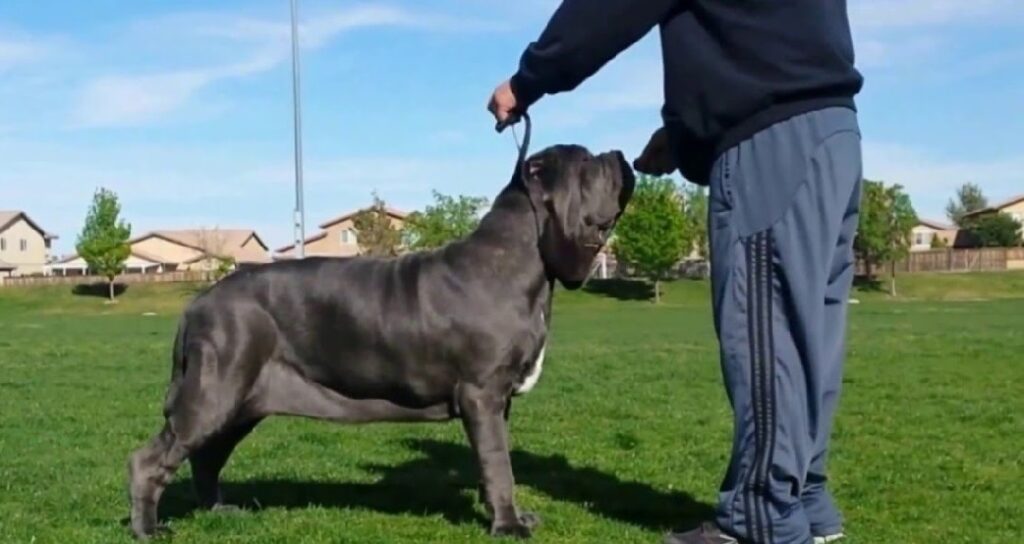
Neapolitan mastiffs dogs can be tough to train. They are tough and strong and if they become aware of the fact that they are stronger than their owners, they can be tricky to convince.
Neapolitan mastiff requires training from an early age. They tend to be very active as young pups. They love playing with kids and other dogs. But as they get older, the changing temperament, and their size, changes.
They need constant, life-long training to socialize with other pets and strangers. They are suspicious and highly protective.
This breed is not suitable for first-time owners. They need someone who is firm in command and does not give in. A lot of discipline is required which can take a toll on the patience of novice owners.
Games that promote power play, such as tug of war, should be avoided. They let the dog know of its strength and hence promote stubborn behavior.
Neapolitan Mastiff Exercise
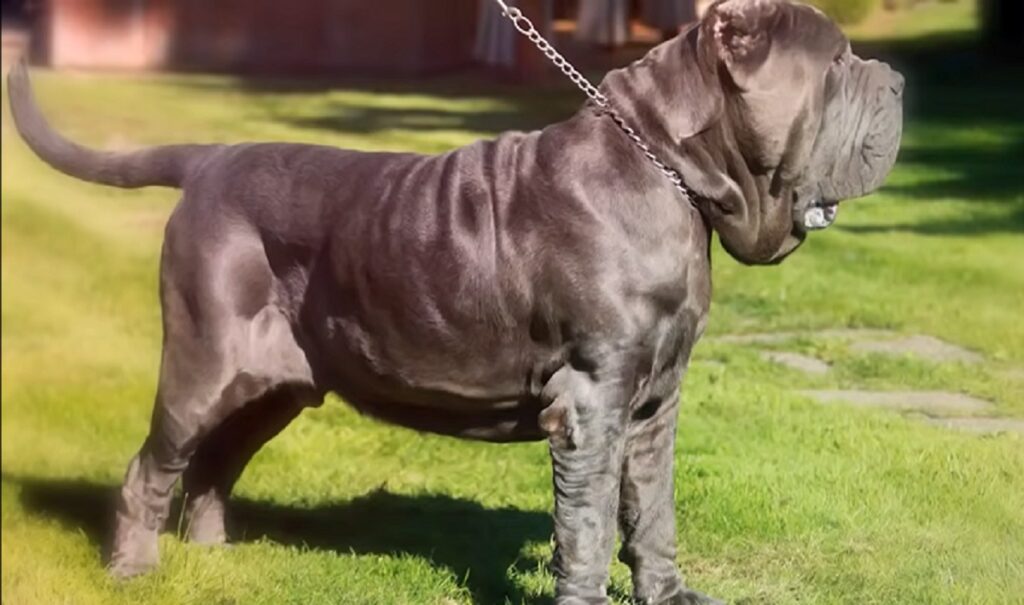
Neapolitan mastiff puppies are very playful and energetic, but their activity levels should be monitored. Stairs, uneven surfaces, and over-exercising the pup can cause joint health problems later in life.
Puppies should start with gentle exercises, gradually increasing to more strength as the pup develops stamina.
This breed loves the freedom to stroll around the yard. It does not like long walks. If you are into hiking, this is not the dog you want. It will be laying down on the ground after half a mile.
Once the dog gets older, it becomes passive and prefers to sit on the couch for long hours. But for their health and well-being, 20 minutes of exercise is mandatory every day.
Neapolitan Mastiff Diet and Nutrition
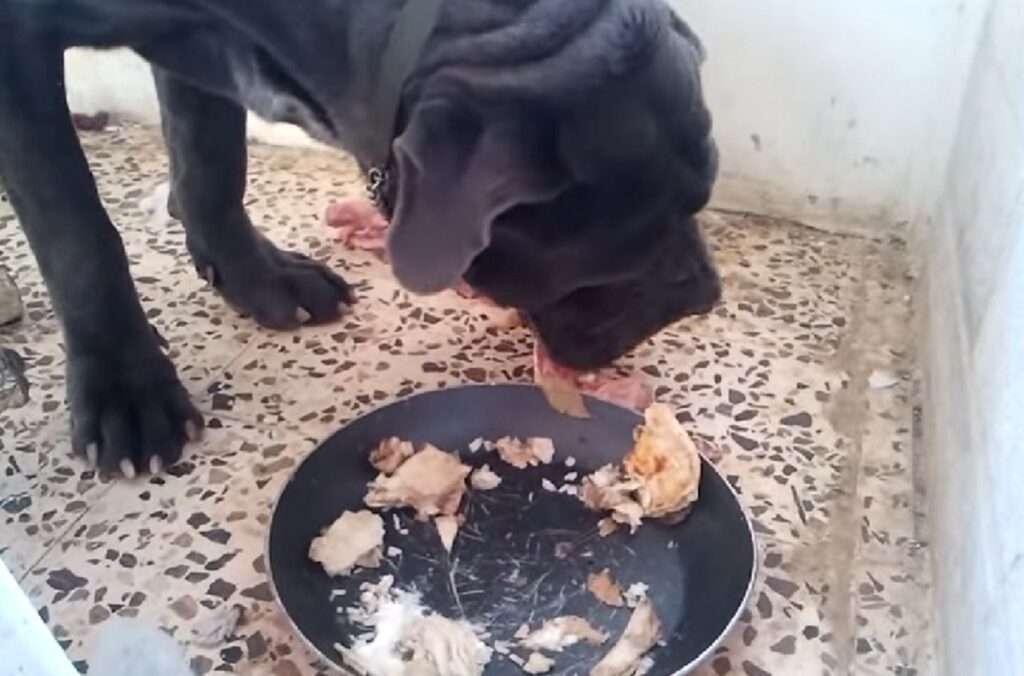
A Neapolitan mastiff dog needs nutrient-rich high-quality dog food and plenty of fresh water according to its weight and activity level. The puppies grow rapidly, so the AKC recommends providing food with more fat and less protein.
It is important to give food high in fiber with natural whole ingredients. No two dogs have the same nutritional needs. Ask your vet for a meal plan designed for your dog.
We recommend giving small portions of meals spread throughout the day. Larger meals increase the risk of gas buildup and bloat. If you are giving treats to your dogs, let your vet know about it and include it in your daily calorie intake to avoid unnecessary weight gain.
How to Adopt or Buy a Neapolitan Mastiff
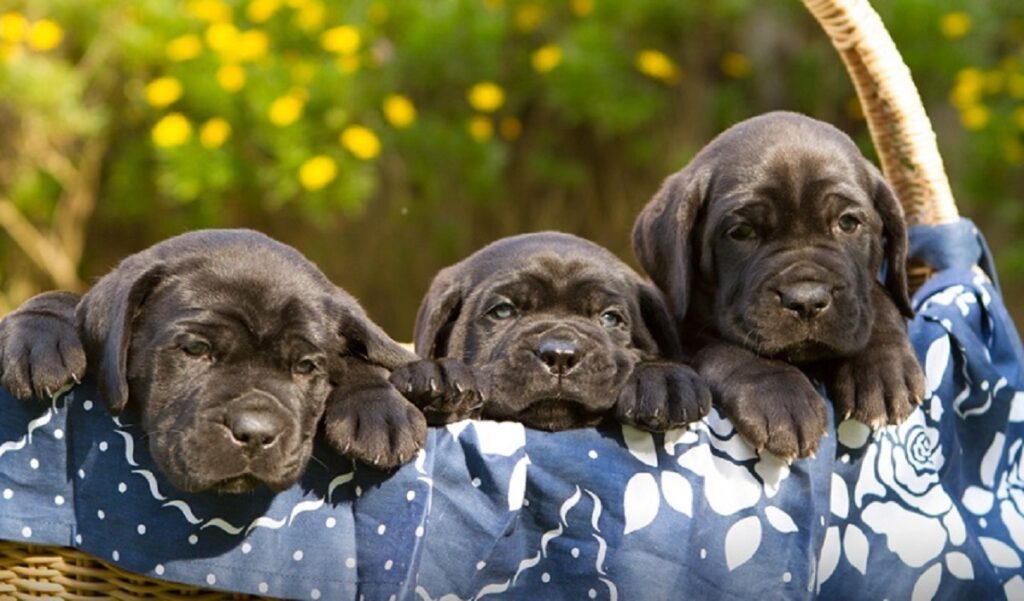
Whenever we talk about getting a new puppy, our priority is to promote adoption. As the Neapolitan mastiff dog is a unique breed, it is very rare to find it in a shelter. However, you can search for breed-specific rescue clubs.
The national breed club and AKC are also great resources to gain information on the breed. While buying from a breeder, make sure you run a careful background check. A responsible breeder will provide you with all the history of the litter as well as the parent’s.
Never buy a puppy before seeing the parents. The parents should be vaccinated and free of health problems. You should also check the environment and condition of the breeding place.
You should also keep in mind that this is a fairly expensive breed, ranging from 2500-5000$ and possibly more. You should also be sure of your ability to train and maintain this dog and whether your house is suited for large breeds or not.
FAQs
Are Neapolitan Mastiffs Good Family Dogs?
Neapolitan mastiff dogs are incredibly affectionate towards their family members. They are protective yet very gentle and mellow at heart. They do not trust strangers but will let them in on their owner’s approval. They look at their family as a pack and any outsider is looked at with suspicion.
Is a Neapolitan Mastiff a Cane Corso?
Although similar in appearance, they are both different breeds of Molossus origin. A Cane Corso is smaller in appearance than a Mastiff.
How Big Is a Full-grown Neapolitan Mastiff?
A full-grown Neapolitan mastiff can reach 200lbs at max and up to 31inches tall. Their bodies are 10% longer in length than their height.
Will a Neapolitan Mastiff Protect You?
Yes, Neos are extremely protective family dogs. They are aware of their surroundings at all times, even when they seem dozed off. They are not very kind towards strangers and bark at them. Their stare and statuesque appearance are enough to scare away invaders.
Conclusion
Neapolitan mastiffs- these massively huge dogs are known as a giant breed of dogs. The astounding head, wrinkled skin, and deep stares are not a sight for the weak of the heart. But looks are deceiving in this case. These giants are extremely affectionate and gentle towards their families.
Originating in Rome some 3000 years ago, these ancient dogs are excellent guards. They protect their families and properties from invaders. Being heavy, they do not like moving around much and prefer soaking in the sun or being couch potatoes.
These companion dogs get attached to their caretakers and engage in destructive habits if enough attention is not given. They are stubborn, and training them can get difficult if the owner is not headstrong and persistent.
Their large frame puts a lot of pressure on the organs, making them prone to some health problems. Pet owners must dedicate their time to grooming, exercising, and feeding their dogs properly to maintain their physical fitness.
If you are into dog competitions, follow the guidelines provided by the national breed club and AKC, and we are sure your dog will stop the show!












